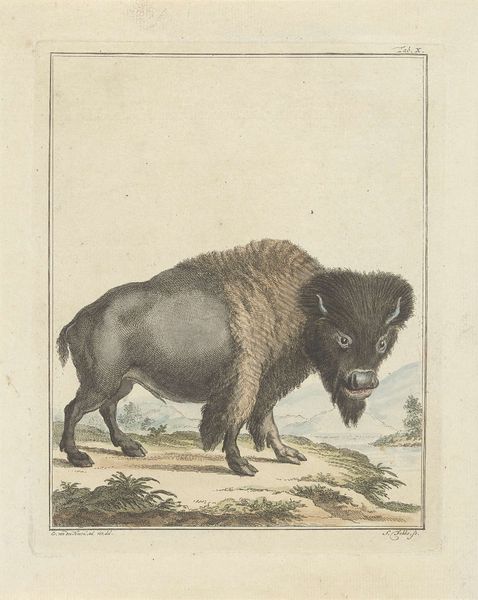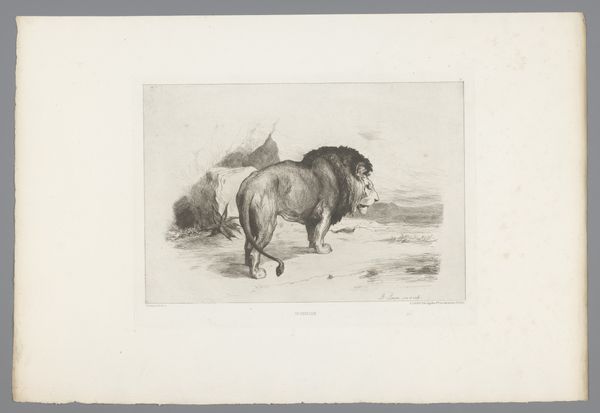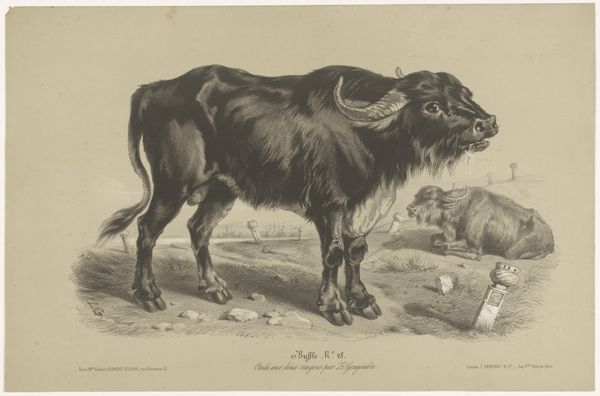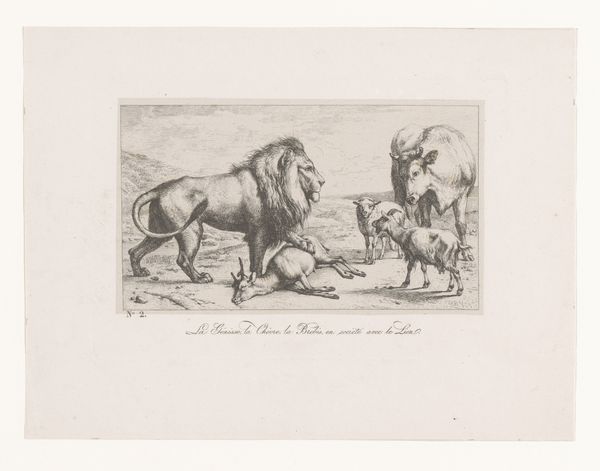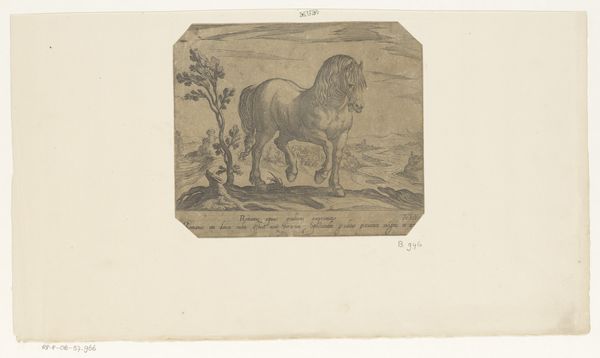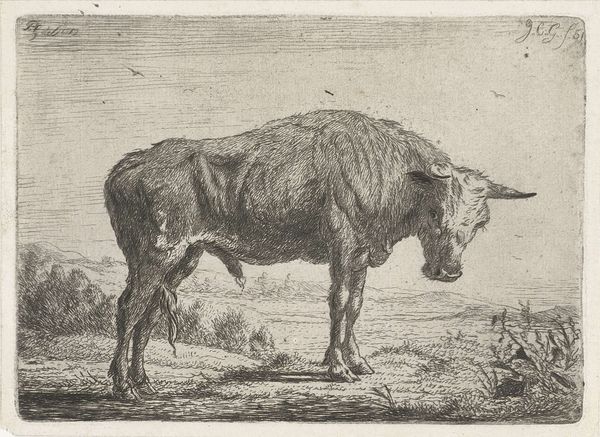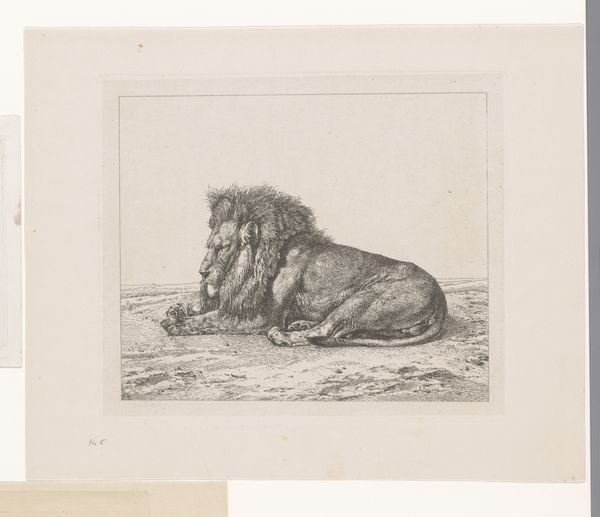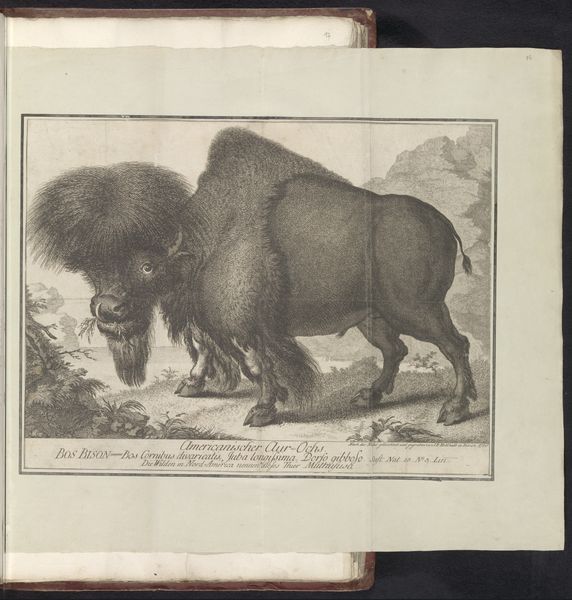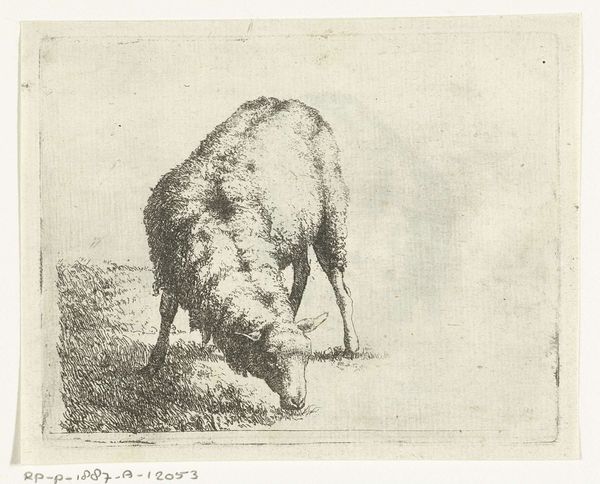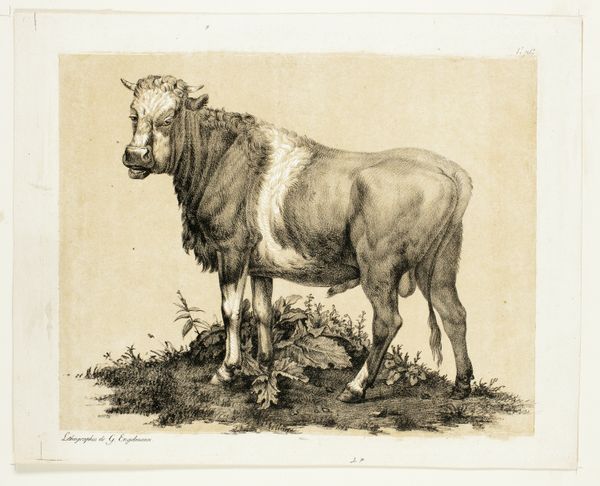
print, engraving
# print
#
landscape
#
engraving
#
realism
Dimensions: height 189 mm, width 235 mm
Copyright: Rijks Museum: Open Domain
Editor: We're looking at "Bizon," an engraving from between 1766 and 1793, currently housed at the Rijksmuseum. It's so detailed! The artist really captured the texture of the bison's fur. What historical perspectives can you share about a piece like this? Curator: It's fascinating to consider this work in the context of the Enlightenment. There was an enormous push for scientific understanding and classification of the natural world. Prints like these, widely distributed, weren’t just art; they were a means of disseminating knowledge, helping Europeans visualize and understand the “new” world and its fauna. Do you notice anything in particular about the way the bison is presented? Editor: It's like a specimen, almost. It reminds me of an animal in a museum exhibit, especially with the measurement markings along the bottom edge. Curator: Precisely! This wasn’t just about appreciating the beauty of the bison; it was about measuring, categorizing, and ultimately, controlling knowledge about the animal and its environment. What effect do you think this had? Editor: It created a certain distance, perhaps? Seeing the bison as a scientific object, not a living, breathing creature within an ecosystem, likely influenced colonial attitudes. Curator: Exactly. This kind of representation contributed to the objectification of the natural world, which, in turn, supported exploitative practices. And let's not forget that these images would have circulated amongst very specific audiences, solidifying certain viewpoints. It served a political function, in a way. Editor: That’s really changed my perspective on what I initially saw as a simple animal portrait. I see the visual depiction is very deeply entrenched with specific ideologies, such as control. Curator: Indeed, understanding art requires us to look beyond aesthetics and into the social and political forces shaping its creation and reception. It highlights the ways art actively participates in society.
Comments
No comments
Be the first to comment and join the conversation on the ultimate creative platform.


